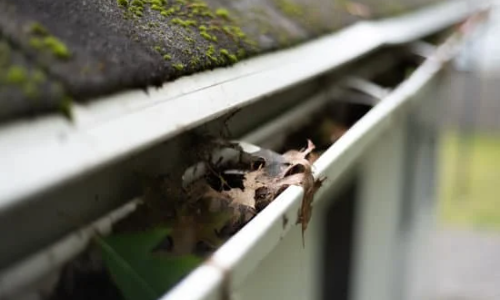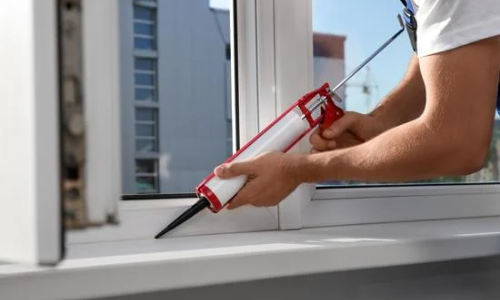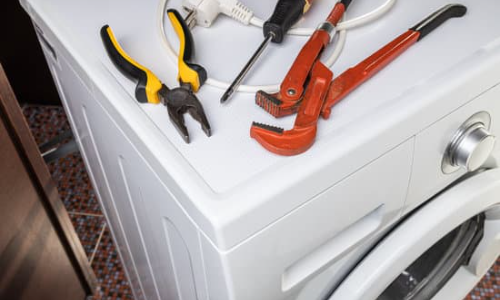Guide to Smart Flood Prevention & Detection
Friday, May 12, 2023 — 0 Comments
Water damage - two words that can strike fear into every homeowner's heart. Water damage and flooding can cost homeowners thousands of dollars to repair and can be a massive pain to fix.
Whether you're worried about frozen pipes, leaky appliances, melting snow, or a wet rain-drenched warm season, there are things you can do to be prepared - Prevention and fast action are crucial to reducing destruction and keeping costs down.
In this guide, we'll cover some steps you can take to help prevent water damage and keep your home safe and dry. We'll start with the basics and work our way up to the Smart Options for your home.

Understand your home's drainage system
Being familiar with the different pieces that make up your home's drainage system could make all the difference when looking to prevent issues or deal with a current problem. This could include knowing the location of your floor drainage, main drain line, standpipe, and shut-off valves.
Know Where the Water Shut Off Valve Is
Speaking of shut-off valves, it is important to locate your water shut-off valve and that you share it with other people in your home so that in case of an emergency, you or other people can switch it off and stop the flow if required.

Attend to downspouts
Downspouts are not necessarily top of everyone's mind, but they can prevent unnecessary water issues if directed correctly away from the house. The idea is to move water away from the home and toward other drainage systems. Ideally, the downspout should be away from the house, facing away and downhill if possible.
It may be a good idea to look into attending to the downspouts - ensure the water is running through the gutters to ensure the downspouts are flowing as needed.
Maintain gutters
Clogged gutters can cause water to back up and pool around your foundation. Adding gutter maintenance to your fall and spring to-do list will help stop them from clogging with leaves and debris.
Inspect your roof
Leaky and damaged roofs can allow water to drip into your house, creating water damage. Sometimes the water may not be noticeable until the damage is extensive. It is a good idea to check your roof, at least annually, for any wear and tear. If possible, also examine your attic for water spots or stains.

Seal Cracks or reseal caulking in foundation and windows
Cracks in the foundation can allow water to leak in, and leaky caulk around windows can let moisture seep, causing water damage over time. It's a good idea to reseal windows when necessary and always patch cracks when you find them - it sounds obvious, but it can seem easier to put them off, at least until the damage is noticeable. Built-up condensation can damage walls and paint and allow mould to grow.
Check your sump pump if you have one
Some homes are equipped with a sump pump. A sump pump moves water from your basement to the outside. It is located in a constructed pit, usually below the surface of the floor. The pump can sense rising water levels or pressure. The pump automatically jumps in when the water gets too high and pumps the water out of the basement. The sump pump plays a crucial role in making your basement won't flood after rain, so checking that it works is critical to avoiding flood damage. Make sure that the electrical outlet is working and that it turns on and moves water.
It may also be a good idea to look into a secondary backup power option so the pump works in the event of a power outage.

Fix leaks ASAP
Fixing leaks may sound obvious, but sometimes it's easy to let things go or add them to the list until they become a bigger problem. When you spot a crack or leak, try to patch it ASAP to avoid too much damage. Think of it this way: for every bit of water or moisture you can see, there is probably more lurking - a leaky tap could displace up to 260 litres of water per week in some cases.
Prevent freezing pipes and insulate plumbing
Freezing and bursting pipes can cause massive damage to your home. Preventing them is key. A simple step to prevent freezing is keeping your home at a minimum of 10 degrees Celsius. For convenience, you can use a smart thermostat to program temperature on the fly. Regularly running warm water through the pipes is also a good idea.
If you're planning to be away and lowering your thermostat to save energy, it's a good idea to follow some steps to prevent freezing pipes.
Maintain drains and plumbing
Every once in a while, a good inspection of drains and plumbing is needed to ensure everything is in working order. Check under sinks to make sure they're not leaking, and repair or replace P-traps as required.
Cleaning sinks regularly, using filters, and checking overflow can help prevent any water issues. Also, avoid pouring fats, oils, and grease down your drains - Over time, they can build up and cause a backup resulting in leaks or flooding.

Perform moisture level checks - look for places with moisture or mold
Even a small leak can cause damage, either with water or mould. Watch for flaking paint or tea-stained plaster and investigate if you smell anything musty. Check around windows, doors, and cold spots for moisture. Windows and skylights can also indicate elevated moisture if they show condensation, often in the morning.
Check your appliances regularly - get routine maintenance checks done
Appliances that use water are at risk of displacing it. It's a good idea to check appliances for visible leaks and ensure they're running as intended. Routine maintenance checks can make sure there are no issues with any plumbing or water lines and lessen your risk of water damage.
Start Smart - Install a smart leak detection system
Another way you can protect your home is by implementing smart leak detection. Technology has come a long way, and there are many options available for what you can put in your home, depending on what you want from it. There are basically three levels of smart water leak detection and flood protection:
- Water leak sensors placed strategically to sound a built-in alarm to notify residents.
- Water sensors attached to an alarm system, dialer or Internet-based system send an alert to the homeowner.
- Water sensors or a water flow meter combined with a water valve that automatically turns off the water supply when a leak has been detected - This may be combined with a local alert and/or remote notification.
Any one of these levels is valuable in protecting your home from water leaks and damage. Check out our new guide to learn more about your smart water detection and flood prevention options.




